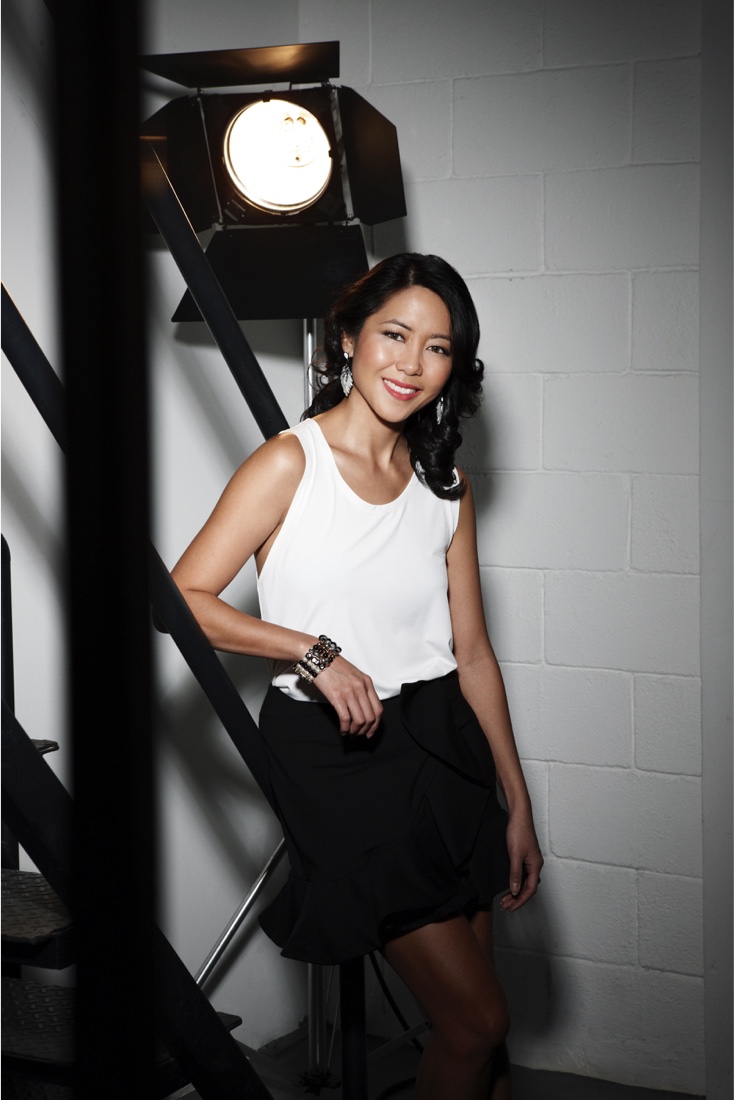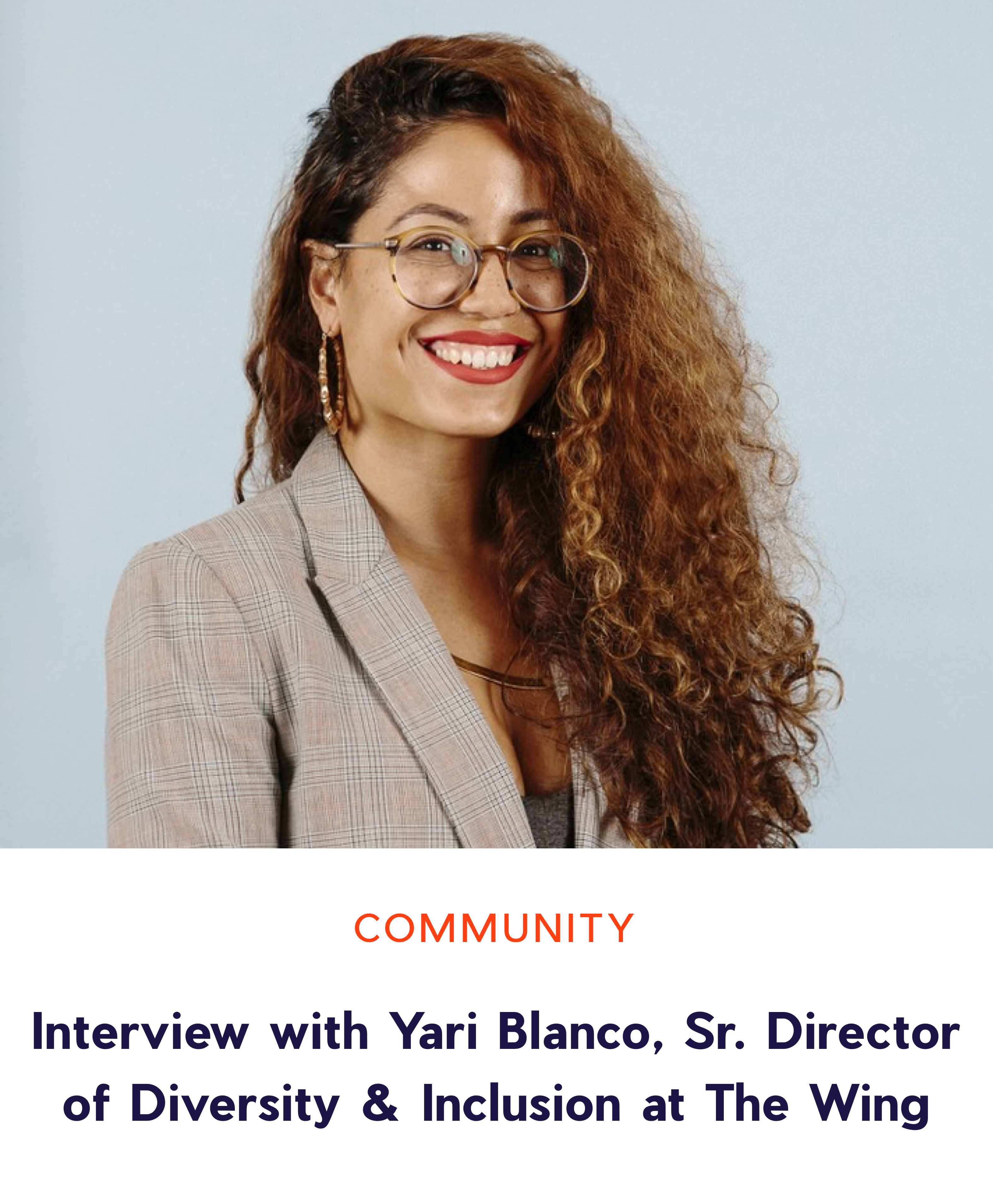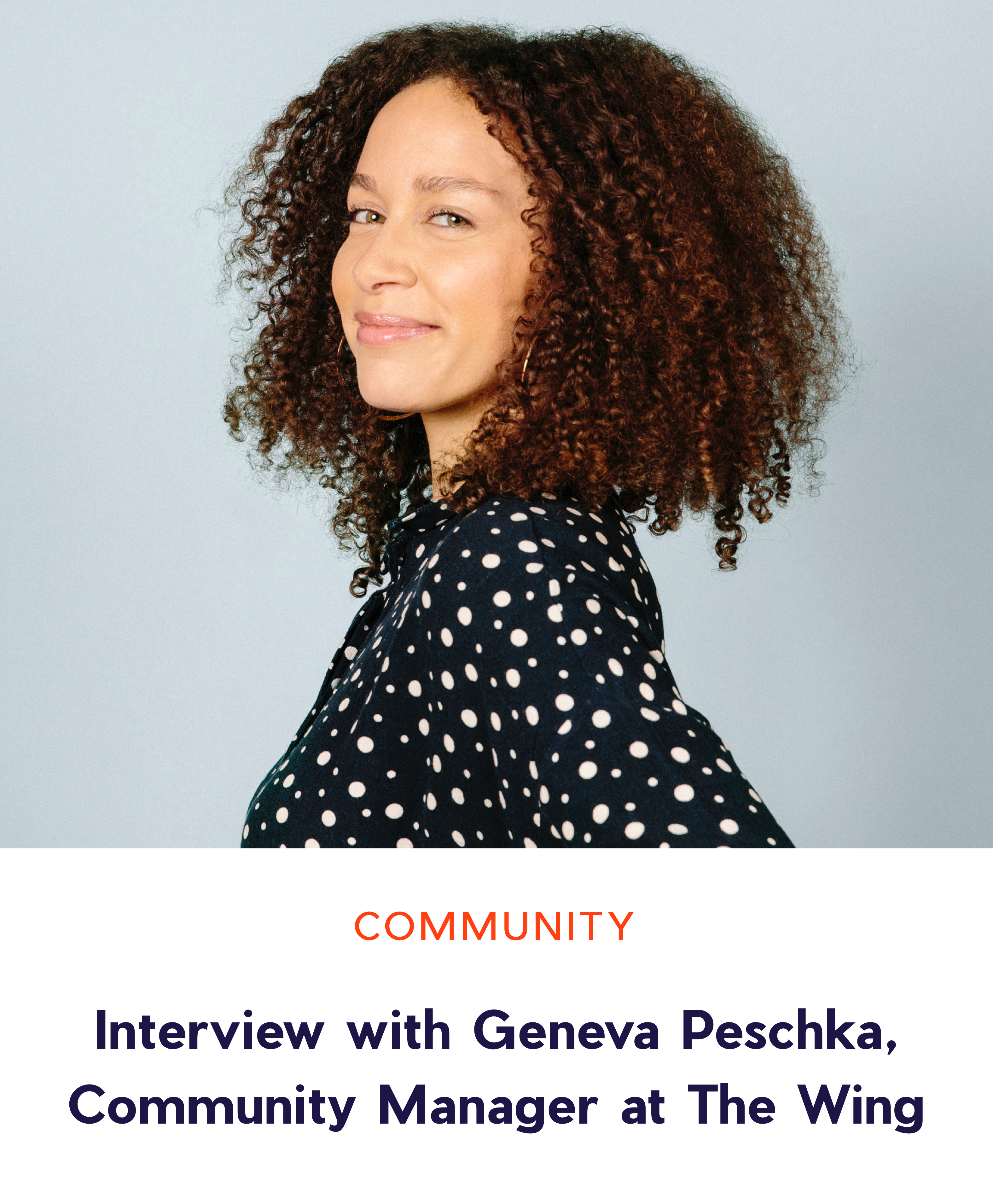Cheryl Yeoh Sew Hoy
On creating a start-up ecosystem in Malaysia, building Reclip.it and CityPockets, and launching a campaign to hold venture capital firms accountable for sexual misconduct.

Photo: Cheryl Yeoh
Cheryl Sew Hoy is currently an EIR at SVB, Advisor to Cosmos/Tendermint, Culture Summit, and many other startups, and Board Member of Flexiroam LTD, and currently resides in the San Francisco Bay Area.
She was listed in TIME’S “2017 Person of the Year,” as the 13th “Silence Breaker,” who spoke out against sexual harassment in the workplace.
On March 8, 2018, she launched #MovingForward, which is an open-source directory to highlight VC’s anti-discrimination and anti-harassment policies and reporting contacts. As of Sept 2018, 110+ VC firms have committed as full participants.
Interview Q's ―
Tell me a little bit about yourself. Where did you go to school and what did you study?
What did you do after graduation? How did you end up working in the technology industry?
How has your perspective changed on women in technology since you were in school?
When you left consulting, what did you do to get into the tech scene?
What did you do after Reclip.It was acquired?
How did you go about building the MaGIC startup ecosystem in Malaysia?
What did you learn throughout building the ecosystem?
What were the hardest parts and challenges of building the ecosystem from the ground up?
Cheryl Yeoh has done incredible things for women, not only as an entrepreneur, but as a mentor an an investor. She continues to hold VCs accountable for preventing the maltreatment of women in the industry.
Maya Frai: Tell me a little bit about yourself. Where did you go to school and what did you study?
Cheryl Yeoh: I studied engineering at Cornell University, where I was initially studying Chemical Engineering and then switched to Operations Research and Industrial Engineering. At the time, I had a full scholarship to study engineering at Cornell. My parents advised me to get into the sciences and technology, since if I wanted to do business later, it’s easier to get into business rather than go to school for business to then try to get into technology. So, I’m really thankful now that I have my engineering degree and had the opportunity to take courses in computer science.
MF: What did you do after graduation? How did you end up working in the technology industry?
CY: When I was graduating in 2005, management consulting was pretty popular so that was what I wanted to get into. At the time, the tech scene was just getting started and at school, we just didn’t really hear much about it. Now it’s a lot different. However, during the 2008 financial crisis, people on Wall Street who were jaded by finance and consulting started to quit their jobs to found tech companies. I followed suit and quit my consulting job to start my company.
MF: How has your perspective changed on women in technology since you were in school?
CY: These days, tech startups are everywhere and a lot more common, so the perception of the industry among college students has probably changed a lot. And with that, more attention is being made to women in tech. But in terms of my thoughts on it, I never really thought about gender that much as I was getting into the industry. I wasn’t put off by the fact that there were so few women in tech and wasn’t really thinking about gender. When I founded my first startup, I thought that my gender shouldn’t precede my occupation, so I didn’t label myself as a female entrepreneur. I’m just an entrepreneur. That’s how I think about it and because I’ve had this mentality, I’m not subconscious about it. I do see that there’s a lot of awareness about it and it’s good that we’re supporting more women in tech. But I think if we focus too much on gender, then we become too self-conscious about the the issues surrounding the gender argument and sometimes it becomes a self-fulfilling prophecy.
MF: When you left consulting, what did you do to get into the tech scene?
CY: After the 2008 financial crisis, I did consulting for another year in New York but I saw people starting companies in tech. Many startups like Dropbox and Airbnb as well as incubators like Y-Combinator were rising very quickly in Silicon Valley. In New York City, the nascent tech scene was just getting started but growing very quickly. I was lucky to be part of that new wave of entrepreneurs and the community was pretty tight at the time, so a lot of good things came out of it. I then started my first company CityPockets and raised some angel funding in NYC. After a couple of years, the startup didn’t work out so we pivoted to Reclip.It, which was a different product but run by the same team. We then got into the 500 Startups accelerator in Mountain View, so in 2011, I moved to California and started to raise more funding there. A year and a half post-pivot, we were acquired by Walmart Labs.
MF: What did you do after Reclip.It was acquired?
CY: We made the transition to Walmart Labs. I intended to stay there for a couple of years, but I was then headhunted by the Malaysian government. I am originally from Malaysia and got a full government scholarship to study at Cornell — they were really the reason why I was able to study there and later on start my own company. So when they contacted me to return to Malaysia to be the Founding CEO of MaGIC, a private innovation agency funded by the government, I knew I wanted to give back. I was given USD$ 30 million dollars over two years to build out the innovation and startup ecosystem in Southeast Asia focusing on Malaysia as a hub. President Obama came to Malaysia to launch MaGIC, which stands for the Malaysian Innovation and Creativity Center. A few years prior, Obama had launched an initiative called the Global Entrepreneurship Summit (GES), which was hosted every year at a different country. When he was in office, part of his agenda was to nurture entrepreneurship and startups in developing countries, and MaGIC was one of the projects that was inspired by GES. I then spent two years in that region building the ecosystem and ended up creating an equity-free accelerator that is still the largest one in Southeast Asia. After doing that for two years, I came back to the Bay Area to work on different technology projects.
MF: How did you go about building the MaGIC startup ecosystem in Malaysia?
CY: So it was interesting because it was a quasi-government agency. Government and startups are at total separate ends of the spectrum because governments are very rigid, hierarchical and slow whereas startups are flat and fast. So I had to wear both hats and straddle between government and policy and the startup ecosystem, which was challenging but ended up being a really rewarding experience when we achieved so much in such a short span of time (see https://impact.mymagic.my/). I focused on getting the best people to work for me and setting up the best workplace culture, and believe that it was one of the reasons why we were so successful. As I was building out MaGIC, I also tried not to replicate the startup hub of Silicon Valley since it was really unique to the Bay Area. When I was living in New York, I saw how the community there built the tech scene with a lot of knowledge-sharing sessions, robust co-working spaces, intimate founder events/dinners, tech demo events, office hour platforms, coding schools, etc. I used what I learned from being in that scene to build out the community in Malaysia.
MF: What did you learn throughout building the ecosystem?
CY: Whenever I think about building a community or an ecosystem, I really think about the full picture. When people typically think about building initiatives like this, they often think that all they need is venture capital or angel funding, but they don’t think about what encourages innovation which is the importance of bringing people together so think of co-working spaces and communities where people need mentors and role models. It’s really important for people to see someone like them, someone relatable and successful that came to give back to the entrepreneurship community. Another thing I learned was that we needed to build a system to provide services to entrepreneurs. What they needed was banks that understood startup needs, lawyers that could draft legal paperwork, which at the time in Southeast Asia was pretty much nonexistent. We had to create a new product line that served entrepreneurs to work with banks, lawyers, and all that. The government was able to teach entrepreneurs how to hire talent, especially with foreign talent, when they needed to deal with getting visas for people to work in outside markets. Another thing was that I had to look at exits. We only nurtured the top of the funnel, which were the seed-stage early ventures. We then helped these startups get initial funding from global venture capitalists. But if none of these startups down the road could exit, then they would go right back into the ecosystem. So we also did a lot of strategic thinking about which were the equivalent Google and Facebook companies who were able to acquire small startups in the region because it was unlikely that a U.S. company would acquire a startup in Southeast Asia due to it being so far away. It was a lower priority for these companies since they would typically prioritize Europe before they would think about investment in Southeast Asia.
MF: What were the hardest parts and challenges of building the ecosystem from the ground up?
CY: I think the biggest challenge was definitely hiring good people. One challenge that people often feel when starting a company is finding the best people who are smarter than you to manage functions of the organization. When I went back to Malaysia, I didn’t really have a network of people since I hadn’t been there in fourteen years. So, I went out and spoke at a lot of events and made sure that people knew what I was about and that I was genuine about helping them. I did a lot of listening since I needed to understand these entrepreneurs, since they were essentially my customers, and I needed to understand what their problems were. I hosted a bunch of roundtables and open sessions to really listen in on what their challenges were. And once I started addressing them and told them I was interested in helping them, I gained a lot of trust. I got a ton of people interested in working with me since they saw that I had a vision and I wasn’t all talk. I also had an online presence from blogging and writing, which I think really helps with branding and shows people that you’re the type of leader people can approach. I think that a lot of other people were really great at marketing what they wanted to achieve but didn’t execute and I made sure to execute very quickly on a couple of things early on. To anyone else who’s thinking of starting something, I would advise them to always show good progress early on since you wouldn’t trust whoever you’re working for or whoever you’re trying to win over if there’s no progress or execution.
MF: Going from Reclip.It to MaGIC, what were the most valuable takeaways you got from starting your own company to then building out a startup ecosystem?
CY: It was definitely very different. At Reclip.It, it was quite small and we grew from when we started at 5 to 9 people, and we were really working around the clock. At MaGIC, the team was 75 full-time employees and 25 interns, so that was 100 people in total and very different. What I learned is that when a company scales from beyond 20 people, you start to feel the need to put in a lot of processes because some things get out of hand and it’s a bigger company. So I thought a lot about putting together processes to scale a company and how to set a good company culture. At MaGIC, I was able to cultivate the culture. We were able to execute so many programs and were quite successful in doing so in a short time of 2 years because we had a great culture. I also got a taste of that when I ran CityPockets and Reclip.it. With both, we had a great culture going with 5–9 people, which was very easy to sustain but it was very different at a company with 100 people. I’ve learned that people really care about authentic leadership. While advising some tech companies here in the Bay Area, I see that a lot of 3–4 year old startups have a great culture initially, but when they scaled to a larger company, communication and culture faltered. A lot of decisions were sometimes made top down and some companies lacked transparency, which often impacts the culture. How I always did it at MaGIC and Reclip.it was to have a top-down and bottoms-up approach, to always solicit feedback from everyone on the team. I had town halls or ask-me-anything discussions for employees to ask any question and I’d be put on the hot seat to answer them. I believe that a company can only go as far as each employee’s personal growth. I really like to work on people’s personal growth and know what each of my direct reports’ career goals are and how I can help them and understand their strengths and weaknesses. It’s also important to know whether or not they are struggling with things either at work or personally, because I feel that if I show that I care, then an employee is more engaged and more motivated to go the extra mile for the company.
MF: What motivated you to start your campaign, #MovingForward?
CY: I had a personal sexual assault incident happen to me when I was leading MaGIC with a former investor, Dave McClure, and I wrote a blog post about it. And this was even before the #MeToo movement where it was pretty scary since I was one of the first females in tech to come out with my personal story. And I’m really glad to see women come out as a result of the movement. Half a year after that, I wanted to keep the momentum going in terms of accountability and see whether or not venture capital firms were actually doing anything about this issue. So a few entrepreneurs and I co-founded #MovingForward to build more transparency around sexual harassment policies and efforts by VCs to show that they are trying to counter the power imbalance. The power imbalance is really the issue, which is between the entrepreneur pitching to an investor and the investor making the financial investment decision. Unfortunately, these pitches are often in informal places like a bar, coffee shop or at a event. So we were really trying to hold these VCs accountable, but instead of naming and shaming them, we wanted to shed light on what positive actions they were doing. When we launched on International Women’s Day on March 8, we had 20 VCs that we started with and by virtue of peer pressure, a ton of other VCs wanted to get on board. We’re now at >120 VCs who have published their policies on sexual harassment. Before #MovingForward, 80% of them did not have policies protecting entrepreneurs from sexual harassment, so I think that’s a huge accomplishment. In addition, almost all of them did not have formal reporting lines where you could go to someone safe and there would be multiple parties receiving that complaint of that incident. Our two biggest accomplishments were that 120 VCs in the U.S. 1) published policies protecting entrepreneurs when they didn’t have them before and 2) established a hotline or public line for reporting. And now, we have representatives and partners from the UK, Southeast Asia, and Australia to expand #MovingForward to those regions. We’re hoping that for our one-year anniversary in March of next year, we will have policies not only in the U.S., but all around the world. And it’s really been rewarding to do my part in turning my negative experience into a positive one.
MF: What advice do you have for female entrepreneurs?
CY: I think we often hear that women tend to doubt their capabilities or we don’t ask for things as often as we should. So I would say to any woman to make an effort to be confident and not doubt your abilities because men don’t do that. And negotiate for everything — jobs, career opportunities, and offers.


